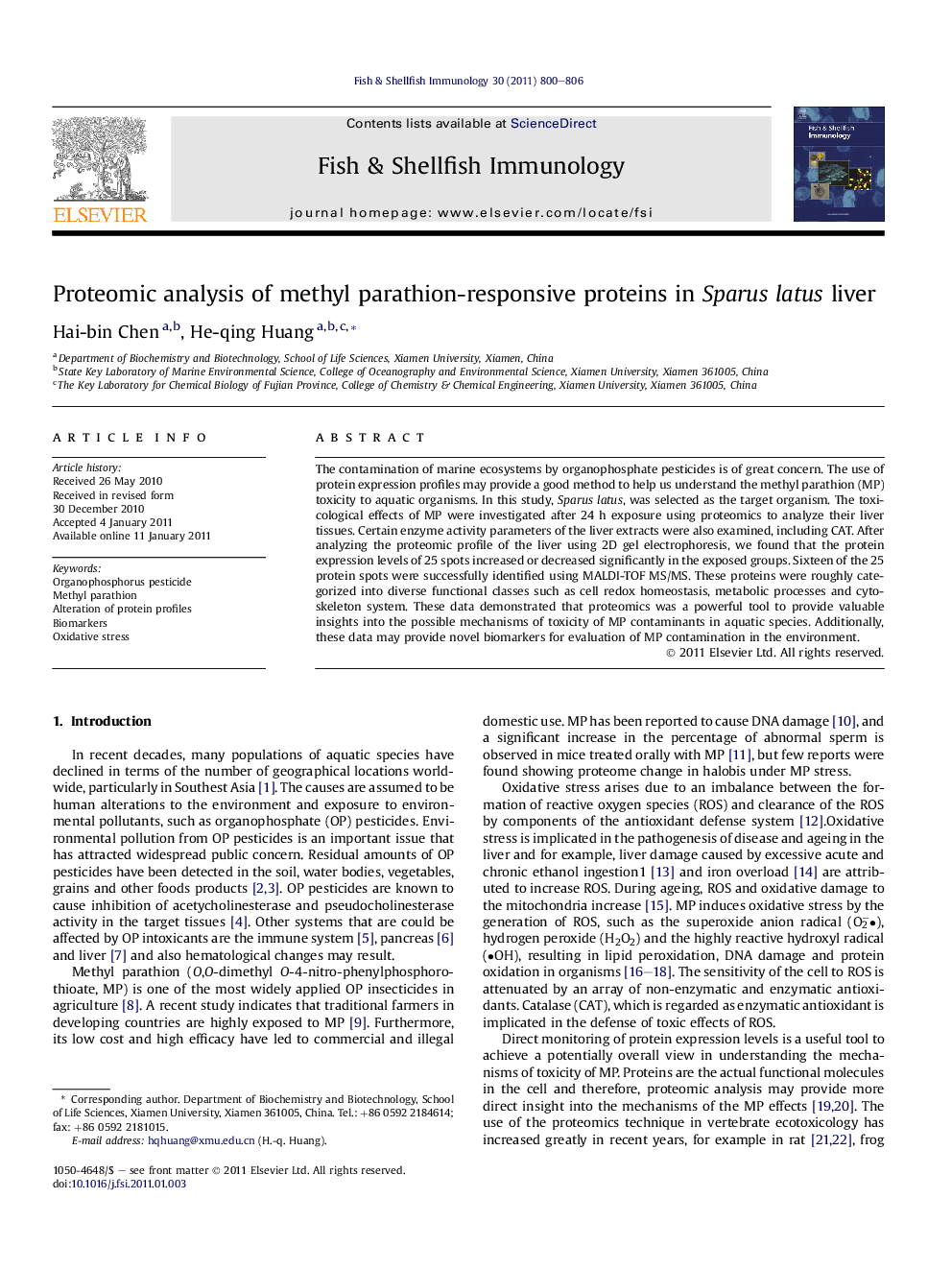| Article ID | Journal | Published Year | Pages | File Type |
|---|---|---|---|---|
| 2432613 | Fish & Shellfish Immunology | 2011 | 7 Pages |
The contamination of marine ecosystems by organophosphate pesticides is of great concern. The use of protein expression profiles may provide a good method to help us understand the methyl parathion (MP) toxicity to aquatic organisms. In this study, Sparus latus, was selected as the target organism. The toxicological effects of MP were investigated after 24 h exposure using proteomics to analyze their liver tissues. Certain enzyme activity parameters of the liver extracts were also examined, including CAT. After analyzing the proteomic profile of the liver using 2D gel electrophoresis, we found that the protein expression levels of 25 spots increased or decreased significantly in the exposed groups. Sixteen of the 25 protein spots were successfully identified using MALDI-TOF MS/MS. These proteins were roughly categorized into diverse functional classes such as cell redox homeostasis, metabolic processes and cytoskeleton system. These data demonstrated that proteomics was a powerful tool to provide valuable insights into the possible mechanisms of toxicity of MP contaminants in aquatic species. Additionally, these data may provide novel biomarkers for evaluation of MP contamination in the environment.
